Galaxies
The largest tightly-organized structures in the whole Universe are galaxies.
Galaxies are composed of billions of stars, circling around forever because of their mutual
attraction. Many galaxies also contain vast regions of dust, which are particles
of metals, metal oxides, carbon, and carbon compounds.
M31
Outside our own galaxy, the nearest other large galaxy is M31 (in Messier's
catalog of fuzzy-looking objects visible in small telescopes, which might
be confused with comets on first glance, item number 31), the Andromeda galaxy.
Below is an image showing how M31 looks in a small telescope:
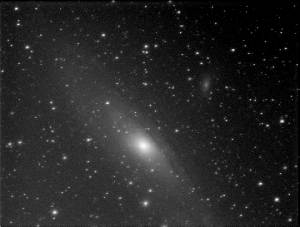
(Copied from: http://www.oregano.demon.co.uk/m31.htm)
With a larger telescope it's possible to get a much higher-resolution image of
the same galaxy. Here's one taken by Robert Gendler:
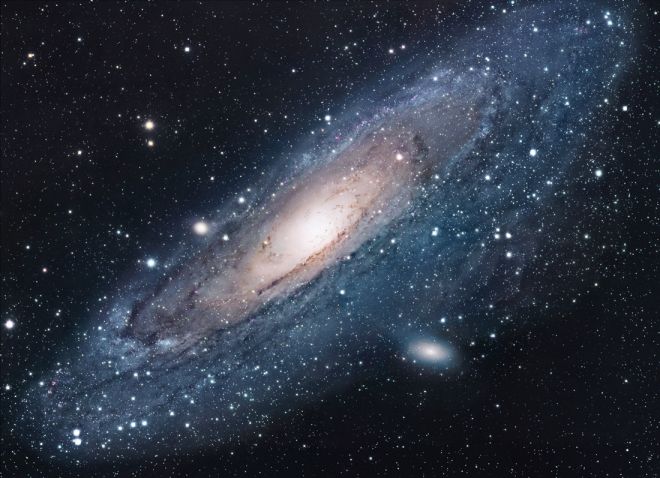
(Copied from: http://antwrp.gsfc.nasa.gov/apod/ap021021.html)
Notice the dark streaks in various parts of the image, especially the one
crossing just in front of the lower edge of the central bright region.
Each dark streak is a huge region of dust in orbit around the center of the galaxy.
NGC1232
Here's another galaxy, NGC (New General Catalog) 1232. First an image from ESO:
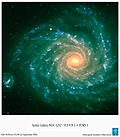
(Copied from: http://www.eso.org/outreach/press-rel/pr-1998/pr-14-98.html)
Here's another image of the same galaxy, taken through a 16-inch telescope:
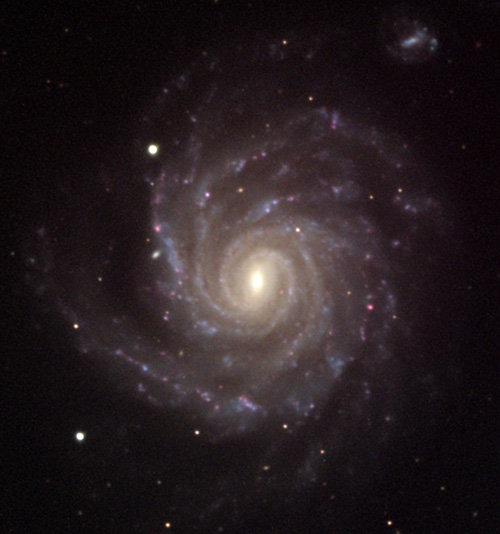 (Copied from: http://www.noao.edu/outreach/aop/observers/n1232.html 16in)
(Copied from: http://www.noao.edu/outreach/aop/observers/n1232.html 16in)
Finally, here's a new high-resolution image of just the central region, through
the Very Large Telescope:
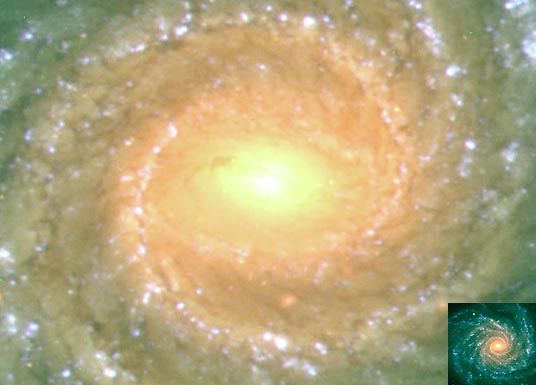
(Copied from: http://antwrp.gsfc.nasa.gov/apod/ap980930.html)
Because this galaxy is viewed face-on, we can't see dark lanes of dust crossing
in front of the bright central region, but if you look carefully you can see
faintly dark lines in various places.
NGC2997
Here's another face-on galaxy, NGC 2997. First an image from the Anglo-Australian
telescope:
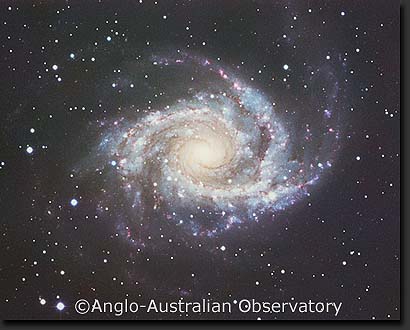
(Copied from: http://www.ast.cam.ac.uk/AAO/images/captions/aat017.html)
This galaxy has more dust than the previous. Notice that even in this first image
you can clearly see long thin dark lines of dust spiraling out from the center.
Here is some text to fill up all the right and flow below the image:
(The photo on the cover of Sky and Telescope appx. 15 years ago is prettier.)
(The photo on the cover of Sky and Telescope appx. 15 years ago is prettier.)
(The photo on the cover of Sky and Telescope appx. 15 years ago is prettier.)
(The photo on the cover of Sky and Telescope appx. 15 years ago is prettier.)
(The photo on the cover of Sky and Telescope appx. 15 years ago is prettier.)
(The photo on the cover of Sky and Telescope appx. 15 years ago is prettier.)
(The photo on the cover of Sky and Telescope appx. 15 years ago is prettier.)
(The photo on the cover of Sky and Telescope appx. 15 years ago is prettier.)
(The photo on the cover of Sky and Telescope appx. 15 years ago is prettier.)
(The photo on the cover of Sky and Telescope appx. 15 years ago is prettier.)
(The photo on the cover of Sky and Telescope appx. 15 years ago is prettier.)
(The photo on the cover of Sky and Telescope appx. 15 years ago is prettier.)
Now a high-resolution image of just the center of this galaxy, as viewed by
the Very Large Telescope:
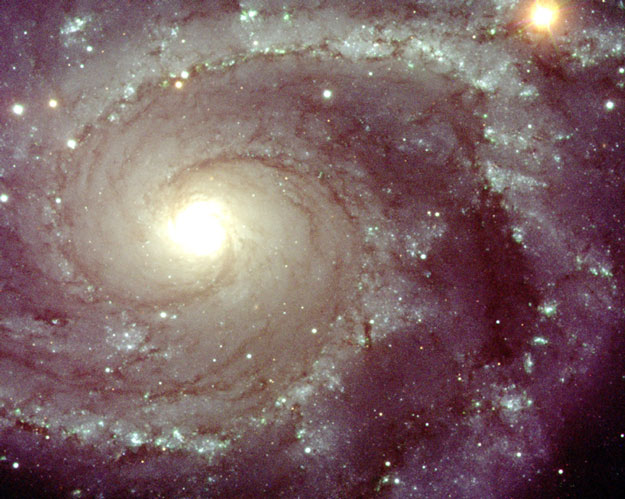
(Copied from: http://antwrp.gsfc.nasa.gov/apod/ap020804.html)
Complicated patterns of dust are quite apparent all over this image.
Part 2 of this document
Copyright 2004 by Robert Elton Maas
Link back to my home page






